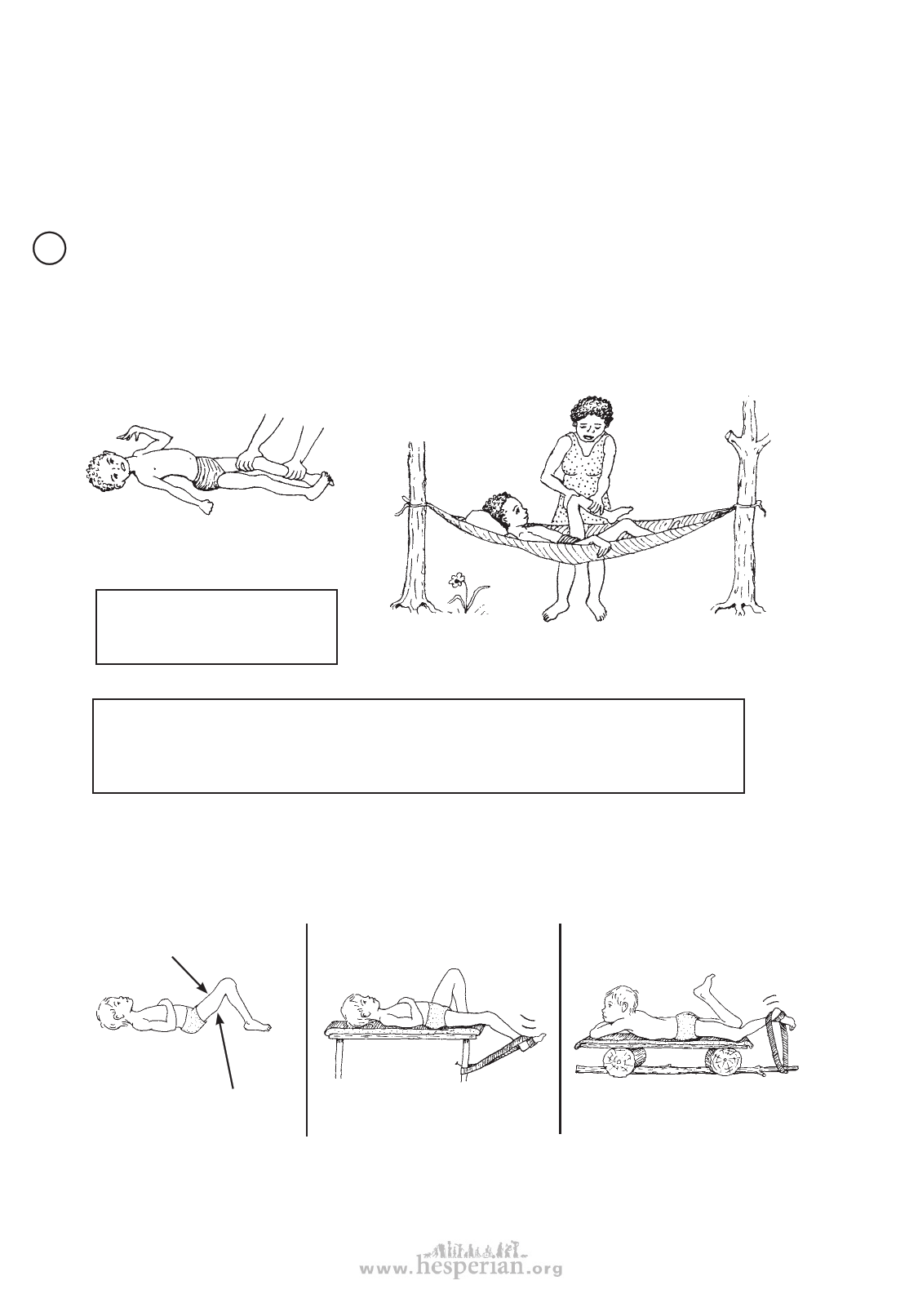
376 chapter 42
7. In doing range-of-motion exercises for a stiff neck, caution is needed to make sure
the neck bones do not slip and cause damage to the spinal nerves. This damage
can cause total paralysis or even death. The danger is especially great in persons
with arthritis, Down syndrome, or neck injury. Do not use any force to help the
person bend her neck. Let her do it herself, slowly, with many repetitions, and
without forcing.
CP
8. In children with cerebral palsy, sometimes the standard range-of-motion
exercises will increase spasticity and make bending or straightening of a
particular joint difficult or impossible. Often the spastic muscles can be relaxed
by positioning the child in a certain way before trying to exercise the limb. For
example:
When a child with spasticity lies straight
his back, his head and shoulders may
push back. His legs also stiffen and will
be hard to bend.
But if we position the child
with his back, shoulders,
and head bent forward,
this helps to relax his stiff
legs and will make motion
easier.
It may also help
to rotate the leg
outward before
trying to bend
the knee.
It may be very hard to bend the spastic
legs of a child in this position.
REMEMBER: Fast movements
increase spasticity.
Do exercises VERY SLOWLY.
A hammock is good for positioning the child
with cerebral palsy who stiffens backward.
CAUTION: Range-of-motion exercises are very important for many children
with spasticity, but special techniques are needed. More examples of how to relax
spasticity are given in Chapter 9 on cerebral palsy. However, you can learn a lot by
trying different positions until you find the ones that help relax the spasticity.
9. In joints where there is muscle imbalance (see p. 78), do exercises to strengthen
the weaker muscles, not the stronger ones. This will help to prevent contractures by
making the muscle balance more equal.
If the muscles that straighten the
knee are weak,
then do exercises that strengthen the
weaker side.
Do not do exercises that
strengthen the stronger side.
and the muscles that bend the
knee are strong,
This will make stronger the muscles
that straighten the knee. It helps
prevent contractures.
This will make the muscles
stronger that bend the knee—and
make contractures more likely.
In daily activities, also, look for ways to give weak muscles more exercise than strong
ones. This advice is discussed in more detail in Chapter 16 on juvenile arthritis.
Disabled village Children